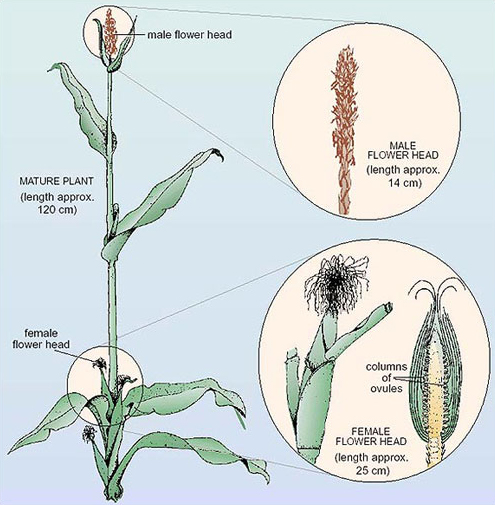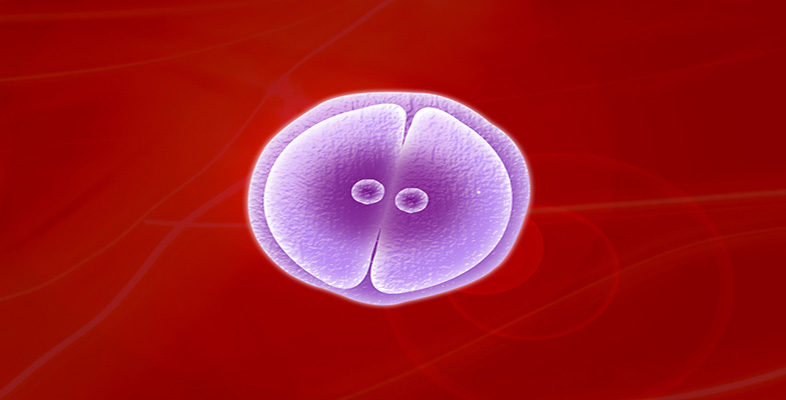3.1 Inheritance of colour in maize
We begin with one of the simplest known examples of inheritance, that of grain colour in maize. We will consider two of the possible colours: purple and white. A cob in which all the grains are purple has the 'purple phenotype'; a cob with white grains has the 'white phenotype'. The two cobs are said to have contrasting characters.
Maize cobs consist of hundreds of grains (seeds) arranged in columns. Each of the grains on the cob is the result of a separate fertilisation of a female gamete inside each ovule (Figure 4). Before fertilisation, each maize plant carries hundreds of flowers in the flower heads, but the male flowers are separated from the female ones, as shown in Figure 4. The male flowers produce pollen grains (each containing a male gamete) which, in maize, do not normally fertilise female gametes from the same plant. (Male and female gametes on the same plant mature at different times.) This ensures that the pollen from one plant fertilises the female gametes of another plant, a process called cross-fertilisation. We use the terms 'ovule' and 'pollen grain' as shorthand for the female and the male gametes, respectively although these structures are not actually the gametes of plants but contain the gametes.
Thus a maize cob is the result of several hundred cross-fertilisations, and each grain has the potential to develop into a new, individual plant. Each single cob therefore provides a wealth of information about inheritance in the maize plant.
A variety is said to be pure-breeding for a character if all its members have the same character, such as purple grains, and all breeding within that variety leads to offspring that have the same character. For example, purple-grained maize and white-grained maize are both pure-breeding varieties. But why should grain colour be different in the two varieties of maize? And if plants of these two varieties were cross-fertilised, what would be the grain colour of the offspring? In order to answer these questions we will describe a breeding experiment, carried out in two stages, using these two maize varieties.

